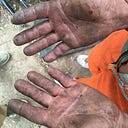The Brief Life of a Homeless Encampment
The life of a homeless encampment can be brief.
Consider Village of Hope, a fledgling homeless village that popped up in a remote, woodsy area of Portland in late January. It featured 10 tents on wooden platforms, a shared kitchen and “Chill Out Zone” for mental health decompression. There were even plans for a human-powered laundry trough. “I don’t look at it as primitive,” said an organizer, Lisa Lake. “We need to be innovative so people who have nothing can be self-sufficient.”
But the day after the camp appeared, Portland mayor Ted Wheeler called the self-governed encampment, on parks-owned wetlands near the Columbia river, “unacceptable”. On 2 February, police and rangers cleared the site without incident.
Officials evidently have few reservations about displacing people even in winter or amid a homelessness crisis of unprecedented scale across the west coast. Indeed, three days later, a San Jose camp dubbed “Googleville” was also swept.
One Village of Hope resident, Kerry Wheeler, asked: “Why can’t they let us have one little place?”
This brief was included in the Guardian’s Outside in America newsletter on March 10, 2018.
